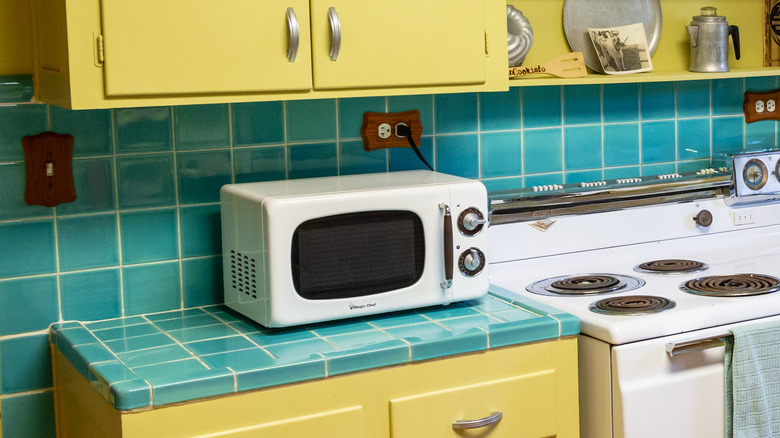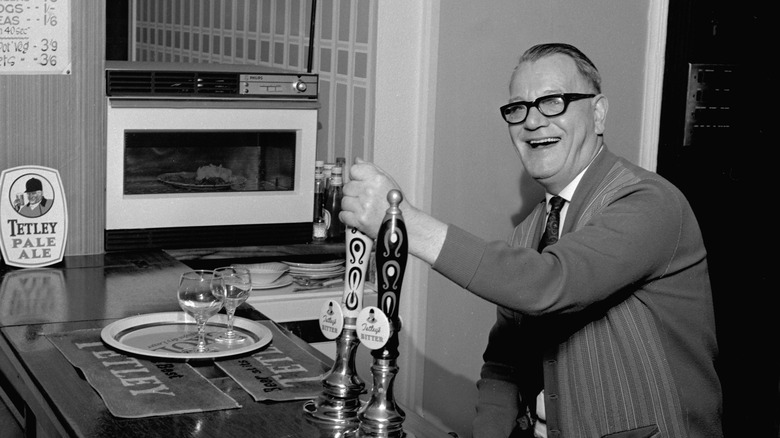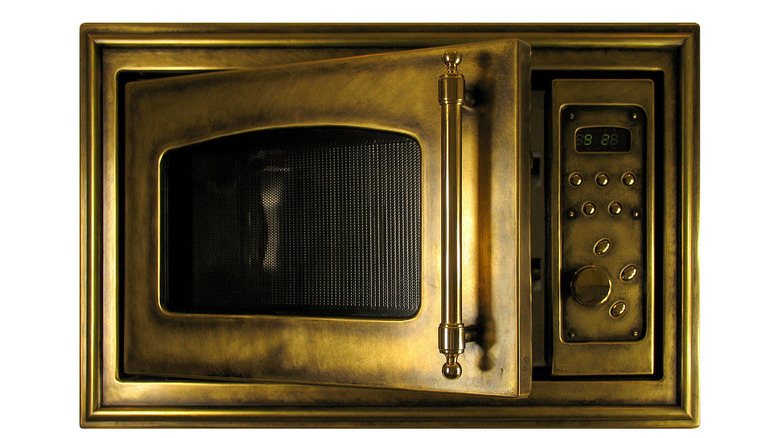Is It Dangerous To Use An Old Microwave?
Most of us probably take our microwaves for granted. From heating up leftovers to steaming microwaveable veggies directly in the bag to popping popcorn, these unbelievably useful and convenient kitchen appliances are a mainstay in just about every home these days. However, that wasn't always the case. In fact, 80 years ago, you wouldn't be able to find a microwave in anybody's kitchen.
The very first microwave was developed entirely by accident in 1945, by a Raytheon engineer named Percy Spencer. As the story goes, on behalf of Allied forces during World War II, Spencer was working on building radar magnetrons that produced electromagnetic waves, details Popular Mechanics. While experimenting with a powered radar set one morning, he noticed that the electromagnetic waves had caused a candy bar in his pocket to melt. Curious, Spencer began running tests, heating other foods with the magnetron tubes, only to find that the machine could cause an egg to explode and pop the perfect bowl of popcorn.
After these electromagnetic waves were harnessed in an enclosed metal box, the very first microwave oven was born. In 1947, the first commercial model, called the Radarange, hit the market — although, weighing in at almost 750 pounds and costing the equivalent of about $25,00 in today's money, they were hardly accessible for the average family.
Microwaves heat food using electromagnetic waves
Throughout the 1950s and 1960s, the size and price of microwaves decreased, until eventually almost every American could afford to cook with a microwave in their own home, says Wired. These days, modern microwaves are far more energy-efficient, not to mention much cheaper, and are equipped with a number of extra features, functions, and presets that make them much simpler and faster to use, according to Viva Flavor. But what if you just so happen to have one of those older models in your possession? Whether inherited from an elderly relative or just stumbled upon at a yard sale, some old microwaves might still find their way into kitchens across America. But are these Instagrammable vintage implements safe to use?
Microwaves work by reflecting small electromagnetic waves, called microwaves, into the metal oven through an electron tube or magnetron. The microwaves "cause water molecules in food to vibrate, producing heat that cooks the food," explains the FDA. Because they do use radiation, it is understandable that one might be a little cautious around microwaves, particularly the models that used older technology or may have developed under more rudimentary regulations.
It's not an illogical fear: When microwaves were first invented, nobody was particularly concerned with the potential dangers of using electromagnetic radiation to cook. In fact, Spender didn't even know if microwaves could be harmful before he decided to begin cooking with them, according to Popular Mechanics.
Old microwaves are generally safe to use, with one caveat
These days, we know that the small amounts of low-frequency electromagnetic radiation used in microwaves are unlikely to be harmful to humans, according to the BBC. And the good news is, most old microwaves, as long as they have been well-maintained and are still able to function, are also likely safe to use today: According to Science Focus, there is a very low risk that old microwaves will cause harm.
However, there is a nonzero chance that some damage could have occurred to the microwave that could cause potentially harmful radiation to leak out while it is running. If the screen or the rubber seals around the microwave door have been tampered with or damaged, it is possible that a higher amount of radiation could leak out of the machine.
Luckily, there is a very easy way to check whether that is the case. A simple microwave leakage tester, which can be purchased at most home improvement or electronics stores, or online at Amazon for under $30, can quickly determine if the microwave is leaking too much radiation. If no leakage is detected. go ahead and show off that antique microwave on your counter.


